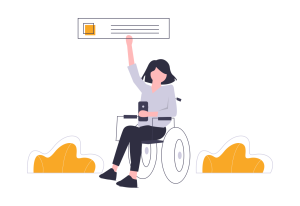
Blending the Path to Inclusive Education: A Successful Approach to Addressing Classroom Diversity and Early School Leaving
- ClassroomDiversity
- EarlySchoolLeaving
- EmotionalLearning
The course was conducted within the framework of KA1 training from 14th to 20th May 2023. The group of participants comprised 22 teachers, leading to the decision to establish a blended learning course to provide ample time for familiarisation with fundamental concepts before the official training dates.
Context
From 14th to 20th May 2023, IDEC S.A organized the KA1 training course, “Inclusive Education: Addressing Classroom Diversity and Early School Leaving,” in Piraeus, Greece. The participant group consisted of 22 teachers, making it an ideal opportunity to introduce a blended learning course that commenced before the official training. This approach allowed teachers to independently study via an online platform and address any queries during in-person training sessions.
People Involved
The instructor, Betty Aggeletaki, has experience in implementing blended learning in her courses, augmenting them with online videos featuring subtitles. Her area of expertise encompasses mental health and entrepreneurship.
The participants included teachers from Latvia, Portugal, Spain, and Romania, representing various school levels, including primary schools, secondary schools, second chance schools, and technical schools. English proficiency varied among participants, with some having excellent skills while others possessed only basic knowledge. Their digital proficiency was predominantly age-dependent.
The blended course was designed to be user-friendly and complement the in-person training. Before the in-person training, trainees engaged in online preparatory work during the preceding weekend, allowing them to gain an initial understanding of the upcoming in-person training. They registered on an e-learning platform, studied uploaded modules, and completed quizzes serving as assessments at the end of each module. This approach helped participants gauge their knowledge of inclusive education and arrive at the in-person training well-prepared.
During the in-person training, Mrs. Aggeletaki delved deeper into the topics available on the e-learning platform, fostering interactive activities to enhance the training’s effectiveness and engagement.
Before the transformation
The training course commenced online, with participants studying introductory materials and completing self-assessment quizzes. The subsequent face-to-face training in Piraeus provided in-depth presentations of the e-learning platform’s modules, along with classroom discussions and games. To facilitate further learning, selected topics were digitally transformed to enable learners to revisit course materials at their convenience.
The Individual Education Plan was a pivotal topic, involving a brief presentation on the e-learning platform. Participants were tasked with creating their plans, leading to discussions during in-person training regarding the effectiveness of these plans in inclusive education.
The transformation
In the transformation process, certain topics were designated for online delivery before the in-person training. These topics included Inclusive Definitions and Teachers’ Challenges, Signs of Learning Difficulties, Educational Learning Theories, Individual Education Plans, Learning Styles, Emotions, and Sense of Belonging, and S.M.A.R.T. and S.W.O.T. Techniques. Small presentations were developed for each topic, accompanied by online activities such as questionnaires, opinion sharing, individual education plan creation, and learning style assessments. This approach allowed trainers to assess participants’ levels and tailor the in-person training accordingly.
After the transformation
Participants accessed online materials before the in-person training, enabling self-paced learning. In-person training sessions facilitated questions, feedback, and an assessment of the effectiveness of the blended approach. Overall, participants provided positive feedback, emphasizing the engaging nature of blended learning. However, they expressed a preference for the interaction offered by face-to-face training.
The conclusion drawn was that incorporating online games and a forum for participants to connect and discuss ideas and suggestions could enhance interaction and engagement in future courses.
Technologies Employed
For the blended transformation, Moodle was primarily used due to its familiarity and user-friendliness. It facilitated activity development and allowed easy monitoring of participants’ progress.
Theoretical content was uploaded in book and PDF formats, ensuring accessibility at all times. Videos and case studies enriched the theoretical content. Self-assessment quizzes were provided at the end of each module to help participants identify areas requiring further attention.
Reflections
Challenges Faced

To enhance future courses, the plan is to introduce online games and a connection component to foster interaction.
The feedback on the blended training was positive, with participants finding it more engaging. It suited their age and daily routines, enabling self-paced study and providing the opportunity to revisit material and redo online activities.
What went well?


Was it worth it?
Based on participant feedback, blending learning methods enhanced efficiency for both trainers and learners.
